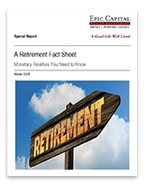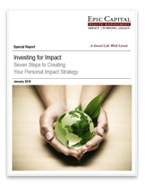The Many Flavors of Fixed Income
Jan 13, 2023

Treasury bonds aren’t your only flavor in the world of fixed-income investing. Far from it. There are various other vehicles you may want to consider as part of a fixed-income strategy, and some of them offer potentially higher yields than Treasuries. It comes down to how much risk you want to shoulder as a fixed-income investor.
The market value of fixed-income investments will fluctuate with changes in interest rates.
As rates rise, the value of existing bonds typically falls. If an investor sells a bond before maturity, it may be worth more or less than the initial purchase price. By holding a bond to maturity, an investor will receive the interest payments due plus your original principal, barring default by the issuer. Investments seeking to achieve higher yields also involve a higher degree of risk.
The federal government backs U.S. Treasury bonds, so default risk isn’t an issue for those securities. Corporate bonds have varying degrees of it, and the degree of risk does influence the interest rate, which may be higher than that of a Treasury bond. (You could say that Treasuries carry an opportunity risk: the risk that you might get a better return from another type of investment.)2
Rating agencies classify bonds at different grades, from AAA (least likely to default) to “junk” (a comparatively higher chance of default). Often, a higher default risk corresponds to a relatively greater interest rate for the bond and vice versa. Bond yields are also affected by bond prices; when prices rise, yields generally fall, and when prices fall, yields generally rise.3
Often, fixed-income investors build a “bond ladder,” a set of individual bonds with staggered maturity dates, to structure cash flow across a period of years. A bond ladder can contain Treasuries, corporate bonds, municipal bonds issued by state and local governments, international bonds such as those issued by emerging-market nations, and even ultra-long bonds with 30-year or 50-year maturities.
Bond laddering is an approach to help manage risk.
It does not eliminate the risk of loss in a bond investment.
While constructing a bond ladder sounds simple, it can be rather tricky. You have to consider where you locate the bonds (taxable or tax-advantaged account), the credit ratings of bonds you may want to add, what to do with the interest income that the bonds provide, and the tax treatment of that income.
Keep in mind this article is for informational purposes only, and it is not intended as real-life investment advice or a recommendation of a particular fixed-income investing strategy. Consult a professional prior to attempting any kind of long-run investing approach.
For more insights and resources, be sure to sign up for our Weekly Market Commentary. Follow our YouTube channel where we regularly post our Epic Market Minute videos. Follow us on LinkedIn, or like us on Facebook. And as always, please don’t hesitate to reach out to a dedicated service professional at Epic Capital.
Tags: Bonds, Fixed income, Investment Planning, Investments, Personal Finance, Treasury Bills
More Insights
Few terms in personal finance are as important, or used as frequently, as “risk.” Nevertheless, few terms are as imprecisely defined. Generally, when financial advisors or the media talk about investment risk, their focus is on the historical price volatility of the asset or investment under discussion.
As Americans get their grills and beach chairs ready for the July 4th holiday, the stock market and the weather across much of the country have both been on heaters. Stocks and bonds continue to effectively navigate a complex policy landscape shaped by evolving trade dynamics, geopolitical tensions, and fiscal stimulus. The market’s resilience in … Continue reading “Market Update – America Gets Record High Stock Prices for Its Birthday”
Birthdays may seem less important as you grow older. They may not offer the impact of watershed moments such as getting a driver’s license at 16 and voting at 18. But beginning at age 50, there are several key birthdays that can affect your tax situation, health-care eligibility, and retirement benefits.
During times like these when geopolitical headlines can be unsettling for investors, we at LPL Research like to remind ourselves of one of our key investing principles. Markets have always faced challenges —ranging from geopolitical conflicts and economic downturns to natural disasters, political upheaval and health crises. These events often trigger short-term volatility and shake … Continue reading “Why Long Term Investing Beats Selling in Volatile Times”
Are you concerned about the inheritance taxes your heirs may have to pay? Then you may want to consider creating charitable lead trusts.
Services
Epic Capital provides the following comprehensive financial planning and investment management services: Learn More >


 Top of Page
Top of Page











